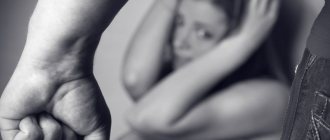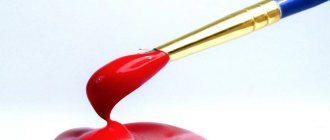Scientists have long been concerned with the question: is there a direct connection between the constitution of the body and character? The idea is relevant for understanding the essence of man. According to psychologists, if you determine the constitutional type, you can assess the character and predict the behavior of the individual.
The constitutional type of a person helps determine the characteristics of his character
Who are asthenics?
The Greek particle "sthenos" means "strength", and when combined with the prefix "a" it means negation. Therefore, in fact, asthenic means powerless, weak. The human constitution is laid down even before birth and is predetermined by genetics.
Asthenics have not only certain external features, but also a unique psycho-emotional inner world, a special type of nervous system. Visually, asthenics are distinguished by thinness. Such people have thin bones, thin wrists and hands, narrow shoulders, an elongated pale face, and average or above average height.
The connection between the physical constitution and mental characteristics was first noticed by the German psychologist Kretschmer. He noted that people prone to dystrophy have a developed but extremely sensitive nervous system. The mental abilities of such people are above average.
However, excessive vulnerability causes them to become withdrawn and emotionally cold. Asthenics are characterized by increased fatigue and low resistance to stress. With excessively accumulated fatigue, asthenic people become irritable, explosive, suspicious and anxious.
Compared to other types (normosthenics and hypersthenics), asthenics are less resilient both physically and morally. Excessive social activity deprives them of energy, which, without proper rest, does not have time to recover.
Ectomorph training
Initially, people with an asthenic physique are weak and intolerant in sports. This is because they naturally have less muscle tissue than other types. These tissues are not prone to overgrowth easily, so overtraining occurs quickly in ectomorphs.
This aspect is important to consider when drawing up a training program: the sports load must be adequate to the physical form of the asthenic. Alternating periods of rest and training becomes a logical way out of the situation.
Regular increase in load is a prerequisite for muscle building, but it should happen gradually, without jumps. It is important to pay attention to the exercise technique, since it “suffers” primarily from general muscle weakness. Monotonous performance of strength exercises can best help achieve results.
Strength training dominates the training program when developing an ectomorph figure. But you shouldn’t forget about cardio exercises either. It is important not to increase their volume to a state in which the asthenic person begins to lose the gained weight. Therefore, the intensity of cardio training is allowed at low and medium levels under heart rate control, for no longer than 30 minutes.
An asthenic type is not a barrier to building the desired shape. If all recommendations are followed, men can correct their natural characteristics. They gain muscle mass and acquire relief.
It is worth remembering one more feature of ectomorphs - it is very easy to lose results. Therefore, training should be regular, and the diet should be nutritious and without failure. In addition, asthenics need at least 8 hours of sleep at night - this is one of the main conditions for the effectiveness of training.
External signs of an asthenic body type
Asthenic physique in women, men and children has characteristic external features that are clearly visible to other people visually:
- do not gain body weight - dystrophy is often characteristic of asthenics; they suffer from anorexia more often than others. Asthenics do not grow in thickness; weight gain is a problem for them;
- above average height;
- pale skin – often associated with the development of anemia due to decreased appetite;
- narrow shoulders and pelvis;
- thin and long upper and lower limbs;
- the face has an elongated shape, the nose is pointed and elongated;
- Malocclusion often occurs due to underdevelopment of the lower jaw.
Aging in asthenics of a pronounced type begins earlier.
Fat and hormones
A number of hormones are responsible for fat deposition, the levels of which can vary greatly among people depending on heredity, health, age, medications, habits, etc.
Ghrelin – hunger hormone
It's simple. When the body needs food, the cells in the stomach mucosa actively produce ghrelin, and we receive a signal of hunger. It has been proven that ghrelin levels are higher in people who are nervous a lot, sleep little, and also have inflammatory processes in the body.
This indicator also depends on the characteristics of intrauterine development. Studies have shown that people whose mothers were malnourished during pregnancy have above average not only ghrelin levels, but also the level of “conductors” responsible for fat deposition. In this way, nature prepares an unborn person for the fact that he will not have to live in the best conditions, and “tunes” his body to obtain food and store it.
An important hormone is insulin.
It is produced by the pancreas in response to the intake of protein and carbohydrate foods. Insulin transports glucose and amino acids to the tissues that need them - the brain, muscles, internal organs. If more food is supplied than the body needs, the hormone “hides” it in adipose tissue.
For all these processes, the body's cells have insulin receptors. The higher their sensitivity, the less insulin is required to cope with the “portion” of nutrients. The more efficiently energy exchange reactions occur, and the better a person is saturated with food.
A number of factors can reduce the sensitivity of receptors:
- genetics (heredity),
- sedentary lifestyle,
- abuse of sweets and alcohol,
- some diseases
Cortisol – stress hormone
It is responsible for natural catabolic processes in the renewal cycle - it destroys protein tissues, in the place of which new ones are synthesized.
If there is too much cortisol (and this can be affected by both chronic stress and complex diseases), it intensively destroys protein structures, disrupting the functioning of internal organs and leading to muscle weakness. At the same time, the amount of subcutaneous fat increases - a kind of dubious compensation for losses. Lack of sleep and overly intense exercise, especially when coupled with poor nutrition, can also increase cortisol levels.
From all this we can conclude that the fat content in the body is influenced not only by the amount of food and activity, but also by a host of other factors. Many of them are truly dictated by genetics. And it is unlikely that it will be possible to change it. All that remains is to accept and love your body the way nature created it.
But this does not mean that you need to “forget” yourself. Exercise and proper nutrition are necessary, first of all, for health and well-being! And you can have it even when you are very different from the “glossy” standards.
Distinctive features of people of asthenic body type
All body types are formed at the stage of intrauterine development of the fetus and cannot be changed with the help of physical activity and dietary restrictions. Features of the body structure influence the formation of clothing style, self-determination, and leave an imprint on the perception of the world around us and our place in it.
Asthenic physique in women and men has a number of features due to gender differences. Some characteristics of the skeletal structure and development of an asthenic child, an asthenic adult and an elderly asthenic will also differ due to age characteristics. This applies not only to externally noticeable manifestations, but also to character and changes in the psyche.
Women
An asthenic physique in women is considered by many as a gift of fate. An asthenic girl (woman) will most likely never have problems with excess weight (with the exception of serious endocrine or hormonal disorders).
Asthenic physique in women
For the female sex, the asthenic type of structure is characterized by:
- thinness, low body weight (often underweight);
- thin and long neck;
- bonyness;
- narrow chest, flat mammary glands;
- elongated oval face;
- long thin fingers;
- elongated upper and lower limbs;
- thin, long nose.
In terms of physique, asthenic women can resemble asthenic men. They often lack attractive rounded shapes and are angular. At the same time, short asthenics are more common among women. Their skeletal system is very fragile. The appetite of such women is reduced, which causes problems with hemoglobin, low blood pressure, irregular cycles, conception and pregnancy.
Poor nutrition, which asthenic girls adhere to intuitively, leads to decreased immunity, frequent colds, and problems with the gastrointestinal tract. Low body weight allows women to remain energetic, but they still lack the stamina and strength to engage in serious sports.
Men
Males with an asthenic body type are distinguished by high growth and underweight. Their muscles are usually not developed, and attempts to build them up or “pump up” are not successful, since they are not distinguished by strength and endurance.
The face of asthenic men is devoid of characteristic cheekbones, but at the same time, their facial features are angular. Long, thin arms, legs and fingers are usually pale. The asthenic constitution of the body also affects the intimate life of such men. They are more likely to encounter problems with potency and age earlier. At the same time, such men are reliable and good family men.
Children
An asthenic child from an early age causes concern in adults, since he eats very little. All efforts to feed him end in failure. Attempts to put pressure on the baby can only worsen the situation, since asthenics have an unstable nervous system.
Asthenic children have thin bones and differ from their peers in being tall and thin. In adolescence, when a developmental leap occurs, body weight deficiency becomes even more pronounced. Girls' first menstruation comes later than their peers. Teenage boys look physically weaker than their peers with a normal build.
If we talk about a psychological portrait, then such children are usually timid, have low self-esteem, compliant, vulnerable, and indecisive. They are drawn more to adults, although they love playing with children. Such children are intellectually developed even more than their peers. Education in the family should be aimed at their socialization and gaining self-confidence.
What kind of psychotype is this?
It is believed that physique is transmitted genetically, but already in childhood, under the influence of nutrition, physical activity, and certain diseases, changes in the natural genotype can occur. A similar relationship can be traced using the example of an asthenic personality type.
By definition, an asthenic (asthenia lat. weakness) is, in psychology, a defensive person (the opposite of an aggressive person), with such traits as instability and weakness of nervous processes, excessive impressionability and suspiciousness, against their background - rapid fatigue. Such individuals occur frequently, so a certain approach is needed to them.
For your information. The asthenic personality type is easily recognized by its characteristic external signs: narrow shoulders, weak muscle mass, thin bones, which creates a feeling of exhaustion. The face is angular, with pale skin and small features, for example, like those of the well-known Don Quixote.
Among the psychological characteristics of this type, in the first place is increased neuropsychic excitability, which distinguishes it from others.
For your information. Parents of an asthenic child or managers who have such an employee need to take into account one circumstance: the weakness and rapid exhaustion of asthenic children makes their work ineffective. This is a direct path to the development of low self-esteem, painful pride and suspiciousness.
An important feature is the susceptibility of asthenics to neurasthenia, therefore somatic disorders are superimposed on asthenic qualities: incomprehensible pain, restless sleep, malfunction of the intestines, increased heartbeat.
As a result, the asthenic type is characterized by a high degree of fatigue and irritability, and a tendency to hypochondria. This must be taken into account when communicating with him, avoiding sudden angry outbursts and emotional breakdowns due to unfulfilled projects.
Asthenics can be easily identified by their appearance
Psychologists note that the character of an asthenic person makes both him and those around him suffer. The grievances and disrespect that accumulate in his life a lot require an outlet. As a rule, irritation spills out on loved ones; he can become a domestic tyrant.
How to determine body type based on height and leg length
Metrically, a person’s body type can be determined by knowing his height and leg length. With a wide-boned and normal-boned body structure, the height range ranges from 164 to 170 cm. Asthenics usually have a height of 170 cm and above.
The height and length of the legs have certain proportions in relation to each other. If the length of the lower limbs is less than half the height length, then the legs are considered short. It is measured from the femur (tubercle), which is located opposite the hip joint, to the sole of the feet, to the floor.
| Asthenics | leg length is more than half the height by 3-5 cm |
| Normosthenics | leg length is more than half the height by 5-7 cm |
| Hypersthenics | leg length is more than half the height by 7-10 cm |
Research by a German professor
Before Kretschmer could identify the relationship between temperament and body structure, and also identify three main types of temperament, he had to study many people. And it is worth noting that his works on studying the relationship between physique and personality make up the majority of all the scientist’s publications (and he has more than 150 of them).
Around 1918-1920, Kretschmer had several brilliant ideas that made the professor world famous. One of the most notable results of the scientist’s active work and research was his main work, published in 1921, a publication entitled “Korperbau und Charakter,” which translated means “Body Structure and Character.” Thanks to her, the whole world learned about the German psychiatrist.
In this publication, the professor described in detail the types of human physique and how physique and temperament are interrelated. After examining more than two hundred patients, Kretschmer was able to identify four main body types, three of which were clearly defined (leptosomal, picnic and athletic), and the fourth was less pronounced (dysplastic).
We recommend: Peter Gannushkin: biography and contribution to science
The basis for this division of somatotypes was the results of studies of absolutely healthy people, as well as the diagram of the relationship of tissue structures in the body, originating from the three germ layers. Taking into account the degree of expression of a particular type of tissue (endoderm, ectoderm or mesoderm) and using a 7-point scale, Kretschmer derived formulas to describe “pure” character types:
- 7-1-1 – picnic type.
- 1-7-1 – asthenic type.
- 1-1-7 – athletic.
Relationship between body structure and temperament
The asthenic physique of women, men and children leaves an imprint on the characteristics of their behavior and character. Among asthenic people there are more hypochondriacs and melancholics, who are characterized by anxiety, lack of faith in their own strengths, a critical depressive outlook on life and timidity.
They cope poorly with stress and often become depressed. Belonging to such weak types of temperament is explained by initial physical weakness and difficulties in perceiving the world.
The problem with these people is lack of energy. Due to its absence, they cannot always cope with everyday and everyday difficulties and multitasking.
However, being melancholic and hypochondriac, asthenics usually adapt well to environmental conditions. Being intelligent and naturally gentle people, they often solve their problems together with stronger loved ones who accept them as they are.
In children
Children with this body type are thin, very fair, and their skin is more damaged than other children. Because muscle mass levels are too low, children are weak. The blood pressure is usually low, and the extremities (arms and legs, especially fingers) quickly become cold.
Signs of people with this body type:
- All people with this body type have a quiet voice, but well-developed attention
- The joints are quite flexible, but the spine is weak, so they often slouch, and a hunchback may appear prematurely
- Asthenics are afraid of blood, they can easily faint, they often feel sick, psychological disorders arise, and they are practically not resistant to stress and irritation.
- Asthenics are often afraid of decisions, they quickly fall into a stupor, are afraid of stress, and are vulnerable.
You can correct the situation with your physique with the help of increased physical activity, as well as the consumption of sweets and protein, carbohydrate foods, vitamin complexes and dietary supplements. I hope now you know what an asthenic physique is and what its characteristics are.
Characteristics of asthenics
In addition to a certain type of temperament, asthenics have the following character traits:
- fear of responsibility, independent life;
- inability to make decisions;
- inability to exist without outside support;
- the desire to shift important decisions to others;
- statement;
- isolation;
- detachment;
- helplessness.
Due to their character traits, they often voluntarily fall into a dependent position when others take responsibility for them, and they adapt. We can say that their character traits interfere with their development and self-determination. They adapt to adapt their desires to the needs and desires of other people, which hinders their development in an individual direction.
The positive character traits of asthenics are:
- empathy;
- diligence, diligence, accuracy;
- Gratitude;
- tact;
- the ability to give love;
- altruism;
- sympathy;
- devotion.
Clinical variants of psychopathy. Asthenic psychopaths
A group of asthenic psychopaths. It is often described according to the model of neurasthenia, indicating increased physical and mental fatigue, excessive sensitivity and impressionability, etc. Meanwhile, asthenic psychopaths are not something like congenital neurasthenics. Perhaps the main feature of asthenic personality disorder is the inability to mobilize and concentrate one’s energy, without which it is impossible to independently solve any difficult life problems. Patients thus resemble children who are accustomed to receiving everything as if by itself, without making their own efforts, without labor and tension.
Patients clearly lack firmness, perseverance, self-control and drive to achieve any goals. It is rare for asthenics to passionately want something, to persistently achieve something, they do not have many goals to which they strive with enthusiasm.
| | Is the psychopathy of a loved one preventing you from living life to the fullest? Contact our psychiatric clinic. We will help! |
Meanwhile, asthenics want much more than they are ready to achieve with their own strength, intelligence and patience, because they have a high opinion of themselves, are very proud and therefore irritable and touchy. The parasitic principle is highly developed in them, and by demonstrating their weakness, ignorance, inability, and fatigue, they actually exploit other people, just as they once did their parents. They try to avoid personal responsibility, and in the event of failures, which they experience painfully, they tend to blame those who could help them or helped them in difficult situations. They take out their dissatisfaction on those who are weaker than them or who are unable to resolutely rebuff unfounded attacks, in order to at least feel superior in this way. Because of their inherent cowardice, asthenics cannot firmly defend their rights, stand up for themselves, or stand up for another person.
They will never take on difficult responsibilities, take on hard work, or take bold initiative because of a reluctance to burden themselves, out of self-doubt that they will not admit to themselves, and also because they do not dare to put their self-esteem to the test. They avoid situations in every possible way in which they are afraid of appearing stupid, funny or incompetent. When this does happen, they suffer from wounded pride and even become depressed and start drinking. When drunk, asthenics are transformed.
Intoxication tears off the veils of shyness, modesty, and vulnerability; they become self-confident, boastful, rude, and arrogant. Asthenics are selfish, unreliable, they can fail and betray, courage and devotion to high values are unusual for them. Their readiness to escape into illness makes them similar to hysterics. Even a slight illness can frighten them, but with a serious illness they become limp, lose heart and become completely helpless, showing no will to recover. When they find themselves in difficult situations, they hide in hospitals; here illness is both a shield and an excuse for them, which is why they often resort to aggravation. The signs of “constitutional nervousness” that Schultz, Bumke and partly P.B. Gannushkin write about, such as fatigue, mood swings, signs of autonomic dysfunction, impressionability, etc., are indeed characteristic of asthenics, but similar symptoms are also found in other types of psychopaths.
The second variant of asthenic psychopathy is dependent personality disorder. Psychopaths of the latter type are characterized by excessive dependence on other people and are ready to obey them, just not to lose their care and protection. They constantly strive to be surrounded by other people in case their help is suddenly needed, slavishly sacrificing their needs and views to any strangers if it helps to keep people close or stay with them. Dependent psychopaths are afraid to be alone, afraid to act at their own peril and risk, and do not dare to try themselves in some independent important business.
It is difficult for them to object to someone, to go against someone, to express protest, to show dissatisfaction and even more so anger, so as not to lose life-saving support. Moreover, they are ready to meekly endure humiliation, endure insults and even violence. Patients are incapable of volition and avoid making their own responsible decisions. In order to act, they first need to obtain advice or guarantees, since the opinions of others are much more weighty and authoritative for them than their own. They agree that all important decisions should be made for them by someone else, because they do not believe in themselves, do not feel the strength of their Self, and the manifestations of their Self in their eyes have long been completely devalued.
A similar phenomenon usually develops in children whose parents suppress all independence and initiative, ridicule fantasies, ridicule manifestations of originality and individuality, and at the same time demand unquestioning submission to their will. Patients do not strive for a career or professional growth, remaining at work in second and third roles, they may refuse a promotion: it is easier and more common for them to fulfill someone else’s demands than to take over leadership. Patients are just as dependent in their own families.
Usually they do not choose a marriage partner, others do it for them, or they are taken as husbands or wives “as if captive” by powerful partners or out of pity, like children. In the family, from the very beginning they find themselves in complete submission, which they have nothing against or are happy with. The tendency to be dependent prevents them from showing their inclinations and abilities, which leads to a later feeling of incompleteness in life and dissatisfaction with oneself.
Illustration (Carson et al.). S., a 32-year-old mother of two who works part-time as a tax accountant, went to a crisis center one evening after her husband M., with whom she had lived for a year and a half, had abused her and left the family. Although he never hit children, he often threatened to do so when he was drunk. S. looked extremely worried and worried about her future; she wanted to know “what to do next.” She wanted her husband to return; she did not seem to care at all about his penchant for assault. In turn, he, unemployed at that time, was treated in a special rehabilitation institution under an outpatient program for coded drug addicts and alcoholics, designed to teach abstinence from all addictive substances through aversion to them and unity with the group.
Although S. earned good money, she doubted her independence. She understood that it was “stupid” to depend on her husband, whom she herself called “a complete loser” (she had the same relationship with her first husband, who left her with a child when she was 18 years old). Over the past months, S. was planning to file for divorce several times, but never decided to do so. She threatened to leave, but when the time came to take action, she “froze on the threshold,” feeling weakness throughout her body and emptiness in her stomach at the thought of “life without M.”
The third variant of asthenic psychopathy is psychasthenia (anxious and suspicious personality, obsessive-compulsive personality disorder). It is often said about such patients that they “make mountains out of molehills”, “are afraid of their own shadow”, “exaggerate dangers”, “inflate their fears”, “exaggerate difficulties”. Patients themselves are usually fully aware of this and admit that they “drive themselves into a corner” for any reason and “a small thing can turn into an insoluble problem.” It is typical for such patients that they are more afraid of imaginary dangers than real ones.
In a situation that requires an immediate reaction, psychasthenics can behave quite adequately, boldly and even courageously. Their problems begin where the struggle of motives begins, i.e., there is a choice. The Achilles heel of psychasthenics is their lack of a sense of reality - the ability to see everything in life as it really is. It is from this source that an endless series of doubts arise about how best to act in this or that case. The processes of automatic thinking, based on cognitive schemes developed by everyday experience, are, as it were, blocked, since it is precisely this experience that the psychasthenic lacks. A psychasthenic can consider any life situation for a long time from a variety of points of view, until he finally gets lost in a variety of interpretations and becomes entangled in the difficulties and fears he himself has invented.
It is not easy for him to even decide whether to go to the cinema or the theater: he is driven not by interest, but by an alarming premonition that he might waste time in vain, which he would use more profitably at home. Unable to complete the struggle of motives, psychasthenics cannot plan their actions. The fear of action haunts psychasthenics constantly. “To love, to dream, to feel, to learn and to understand—I can do anything, as long as I am freed from the need to act,” P.V. Gannushkin quotes the patient. Psychasthenics always need support, advice, encouragement, to be reassured, convincing them that there is no serious reason to worry, worry, or be afraid.
Even having decided out of necessity to do something, they continue to worry whether they are acting correctly, whether they have missed something important, or whether some unforeseen obstacles will appear. The work does not give patients any pleasure; they cannot immerse themselves in it entirely and want to complete it as quickly as possible, primarily for themselves, in order to stop their torment. Psychasthenics do not calm down even after they have completed some task. They continue to doubt whether everything turned out as it should, or whether they forgot something. Even small imperfections plunge them into despondency. Psychasthenics strive for an ideal result. It is difficult for them to understand that when a forest is cut down, chips fly, i.e., something always has to be sacrificed in an important matter.
Therefore, they rarely experience satisfaction even from a job well done. The patient, a doctor, never defended his dissertation, although he wrote three of them; he believed that they were worth little, and, having successfully completed the pre-defense, he put the work aside to start a new one later. The very desire for perfectionism prevents both starting and doing something: the best is the worst enemy of the good. Having started a task, psychasthenics no longer stop; they certainly want to finish it, so as not to be completely upset. If psychasthenics are made managers, which they rarely agree to, they can torture their subordinates with checks for fear that they will do something wrong. In general, psychasthenics prefer work where they do not have to make their own decisions, but only require the fulfillment of what others have planned. But even here they show themselves to be obnoxious pedants, not allowing any deviations from the established requirements.
Typically, psychasthenics are timid, shy, do not know how to refuse when necessary, are embarrassed to thank, and do not dare to demand what belongs to them by right, for example, to force the debtor to return the money borrowed. They are rarely in a cheerful or joyful mood, usually being in an anxious-fearful mood and in irritation, filled with various kinds of fears: not oversleeping in the morning, not being late for work, not meeting the allotted time, not failing the exam, not getting confused in front of the boss , not to be stupid, etc. In the family, psychasthenics occupy a subordinate position; their wife or husband decides everything for them.
In general, psychasthenics spend a significant part of their time fighting “windmills” - with doubts, exaggerated concerns and fears. Someone noted that psychasthenics are people who spend their entire lives in a heroic struggle with themselves. Psychasthenics are mostly conservative, afraid of everything new, any deviations from the usual routine in life, and prone to xenophobia. Mental regurgitation—the tendency to remember and ruminate on past events—has been associated with a high likelihood of patients developing obsessive-compulsive disorder. It turned out, however, that this is far from the case. Obsession develops only in 6–16% of psychasthenics, but even in such cases there is no reason to consider a direct cause-and-effect relationship between obsessions and the character of psychasthenics as proven.
Illustration (Carson et al.). It seemed that A., who worked as a dispatcher on the railway, was in the right place. He was conscientious, perfectionist and attentive to every detail. However, he did not maintain close relationships with his colleagues, and they, according to them, believed that he was a little “out of his mind.” He became very upset at the slightest change in his routine. For example, he became quite irritated when his colleagues violated his carefully laid out schedules and plans. If he got stuck in a traffic jam, he would pound the steering wheel and curse other drivers for keeping him waiting.
In short, A. received little pleasure from life and was constantly worried about trifles. It was impossible to follow his rigid rules, and when he was unable to carry out his intricate plans, he often developed headaches or stomach pains from the tension. His doctor, who noticed too frequent somatic complaints and a rather perfectionistic approach to life, referred him for a psychological examination. A. was recommended psychotherapy, although the prognosis for significant behavioral changes seemed doubtful. He did not follow the treatment recommendations because he felt that he could not afford to be distracted from work.
Quite close to the psychasthenic personality is anxious or avoidant personality disorder (avoidant personality disorder). It can be considered in general as a variant of asthenic psychopathy. Given that such patients are often viewed as having an inferiority complex, they also show significant similarities with sensitive paranoids.
“The central clinical feature of this disorder is hypersensitivity to rejection by others” (Kaplan et al.). Such patients experience an acute need for emotional warmth and security; they desire close relationships in communication, but avoid communication due to an imaginary fear of rejection. They are characterized by a lack of self-confidence and a self-deprecating manner in their interactions with others. Patients rarely dare to speak in public; it costs them a lot of work to make requests to other people. They are easily offended by criticism and disapproval; Moreover, they tend to regard the friendly remarks of others as humiliating and ridiculing them.
They often interpret refusal of any request as an insult. For the most part, they do not have close friends and do not want to come into contact with anyone unless they are sure that they will not be rejected. They prefer social and professional activities that do not require extensive communication, and shy away from service if it is associated with increased social demands. In society, such patients prefer to remain silent; they are afraid of getting into an awkward position, blushing, or otherwise revealing their anxiety and uncertainty in the presence of others. Due to anxiety, patients tend to exaggerate possible difficulties, the degree of danger of the situation or the risk of losing a sense of security. They rarely achieve great success or well-deserved authority for fear of not being able to cope with difficult work and fear of taking responsibility in difficult situations. Mostly they are shy and try to please everyone.
Illustration (Carson et al.). S., 35 years old, librarian, led a relatively secluded life; she had few acquaintances and no close friends. Since childhood, she was afraid of being offended or criticized, and therefore was very timid and refrained from establishing close relationships with others. Two years before starting psychotherapy, she went on a date with a man she met in the library; they were invited to a party. By the time they arrived at the place, S. felt very uncomfortable because she was “poorly dressed.” She quickly left and refused further meetings with her acquaintance. This incident haunted her for two years. This was precisely the reason why S. turned to a psychotherapist, although she was terribly afraid that he would judge her.
During her first treatment sessions, she sat silent most of the time, finding it too difficult to talk about herself. After several sessions, S. gained confidence in the therapist and listed many incidents from childhood when she was “devastated” by the disgusting public behavior of her alcoholic father. She tried to do everything so that her school friends knew nothing about her problems at home. However, S. had to, when it became impossible to hide it, to limit her circle of friends, protecting herself from awkward situations and criticism.
When S. first began treatment with a psychotherapist, she avoided people until she gained confidence that she “liked them.” Over the course of therapy, which focused on improving her social skills and success, S. made some progress in getting closer to and communicating with people.
Finally, psychopathy of the unstable type , since they are especially characterized by “lack of character” (P.B. Gannushkin) and “lack of will” (K. Jaspers). “People of this type,” points out E. Bleuler, “are characterized by a lack of constancy and endurance in affective functions, as a result of which all kinds of internal and external influences of the moment excessively influence their will. Many of them become criminals out of frivolity. Among them there are lively, easily excitable temperaments, and apathetic ones.”
Very noticeable signs of unstable psychopaths are their lack of their own thoughts and beliefs, clear goals and plans for the future that they would strive to persistently achieve, as well as definite and mature ideas about life values that could guide their activities. Moreover, lacking firm principles, strong attachments and stable interests, patients discover a blurred and amorphous identity, due to which they very often become victims of the influence of other people and their own impulses of a predominantly destructive nature. All this is expressed by the patients’ inability to engage in independent prosocial activity, underdeveloped diligence and the need for systematic work, and, no less important, excessive external suggestibility. The power of external influence on unstable psychopaths is so great that, without resisting, they are ready to accept other people's views and assessments as their own. Their pliability is equally great in relation to their motives, of which the attraction to sensual pleasures occupies perhaps the most prominent place.
Unstable psychopaths cannot stand loneliness, in which they have nothing to occupy themselves, and in this respect they are the direct opposite of schizoids. They need a constant influx of acute external impressions, as if filling an internal emptiness. In this regard, patients are the opposite of introverts. Due to the above, unstable psychopaths strive to be among people, not so important which ones, and they are overcome by a thirst for external impressions, something like idle curiosity. Left to their own devices, they often become drunkards, drug addicts, gamblers, and tramps; people leading a promiscuous sex life, and in a criminal environment - thieves, members of criminal groups.
With a superficial acquaintance with them, such psychopaths make a good impression, turning out to be good comrades, pleasant interlocutors, people who captivate with their gentleness, shyness, and calm disposition. But, irresponsible in everything, they often indulge in drunken revelry, spending their last money. When intoxicated, they become rude, selfish, heartless - in a word, as if they had been replaced. Having sobered up, they repent for a while and, without feeling particularly guilty, blame “the environment” that “eaten” them.
You absolutely cannot rely on them; their oaths are empty words. Because of their inherent frivolity, they are often described as people who have “seven Fridays in one week.” “You always have to stand over them with a stick, you have to urge them on, scold them or approve them, depending on the circumstances,” writes P.B. Gannushkin, but not leave them to their own devices in order to keep them within the framework of acceptable social behavior. Patients themselves rarely justify the hope that over time they will settle down or “come to their senses.” Intellectually, patients rarely rise to the occasion, since over many years of study they basically do nothing but “beat their heads,” and only the most capable of them complete the learning cycle. The family life of patients is successful only in cases where they fall into the tough hands of a wife or husband and find themselves under vigilant supervision. In other cases, the family faces inevitable collapse.
Illustration (Bleiler E.). 24-year-old merchant. His father is a good man, but he squandered the family fortune on too large a scale. The mother is irritable, capricious, weak-willed. Her father was frivolous, also squandered his fortune, and was bigamous. The patient himself attended school irregularly, but was a good student. After the death of his father, he became an apprentice in a store, where he squandered a considerable amount from the cash register. He was placed in an educational institution, where everything went relatively well; here he was allowed (he had a good voice) to take singing lessons.
Already during puberty, he did not pay his bills in many places. He was then placed with his aunt, where he spent more than a year. He somehow managed to get around his aunt, so she herself moved into a room in the attic and began to earn her living by needlework, while he took over the salon and bedroom and led a wide lifestyle. He worked in several institutions and, apparently, had, in addition, many engagements as an opera singer, but could not stay anywhere, although the reason for this was not always debts and conflicts with the police on this basis. One complaint against him was withdrawn because it turned out that his action was more frivolous than fraudulent. In some other cases, when he obtained money, apparently through deception, it did not even come to the point of complaints.
By presenting a fake contract, he managed to deceive even the Orphan's Court. In the end, he became engaged to one girl, apparently also of a frivolous nature, from whom he partly through all sorts of deception, partly simply out of large sums, but she also took part in living off this money. Nevertheless, she was forced to file a complaint against him, after which the patient was put on trial. We found a fairly good intellect, but at the same time a slight moral defect, due to which the patient could not properly repent of the evil he had caused. Nevertheless, it turned out that he was always full of good intentions, in new places he worked well for the first time, until temptation took over, and this usually happened after a few weeks or months. The patient had an elegant appearance and carried himself confidently.
However, upon examination, it turned out that in his affective sphere there is some kind of haste and inability to strain his will in accordance with the task and keep it at the proper height until the task is completed. This was revealed not only in life, but also during relatively elementary research, during which he could not concentrate enough to carry out his decision to the end. He always started his written work quite well, but soon lost the thread or crumpled the end or left the work unfinished. He himself had no proper idea about his financial affairs. He doesn’t really remember whether he signed a bill for 6 or 7 thousand francs. Neither he nor his fiancee could really say how much money he had defrauded her of. He counted well, but could make mistakes in the simplest arithmetic problems. When asked to give an account of what he had done, he confused everything, lied shamelessly, often to his own detriment. In his fraud we found more frivolity than malice, which is why we were forced to recognize him as sane, but not capable of taking care of his own affairs. We hoped that the hands of a caregiver would guide the patient in a better direction.
Back to contents
Peculiarities of perception of the surrounding world
An asthenic physique in people contributes to the formation of a special view of the reality around them. Such women and men are vulnerable and have a sensitive nervous system. When faced with life's realities and difficulties, such people do not go on the attack, but try to hide, get away from the problem, and withdraw into themselves. This character quality is called defensiveness.
Defensive asthenics are very conscientious, unlike aggressive and lazy-indifferent people. They are characterized by internal conflict and an exaggerated sense of their own inferiority.
At difficult turning points in life, asthenics see themselves as even more worthless and insignificant. All this leaves an imprint on social adaptation. Asthenics avoid noisy companies or changing occupations for fear of being misunderstood or ridiculed. The world around us frightens the asthenic person, since he does not know how to present himself properly due to low self-esteem.
Differential diagnosis
Unlike also defensive asthenics, psychasthenics do not have acute sensuality, but there is depersonalization and hypertrophied analyticity. Psychasthenic shyness is characterized by motor awkwardness.
There are a number of differences between psychasthenics and anankastes, who also suffer from constant doubts, with whom they are often unjustifiably confused. Anankast has a keen sensuality. He has no motor awkwardness. Many anancasts, unlike psychasthenics, are very practical, decisive and arrogant, unyielding even in details. Accuracy is not valuable for psychasthenics in itself as an anancaste; he needs it to combat absent-mindedness, fussiness, and sloppiness. A psychasthenic is boring so that he can be better understood, and not because of obsessions. It’s the same with multiple checks - for a psychasthenic they are due to poor memory, and for an anancast they are due to obsessions. The conscience of psychasthenics is flexible, while they are ashamed of those who suffered from them, and anankastics are ashamed that they violated their rules, they are afraid of punishment. Anankasts are usually not afraid of death, but they are frightened by the small troubles of life. The fears of a psychasthenic are realistic, while those of an anancast are often absurd.
Features of asthenics that manifest themselves in communication
Maintaining numerous contacts, sociability, popularity and increased demand are not the prerogative of asthenics. Some of them are characterized by an ascetic lifestyle. Being intellectuals, as a rule, by the time they reach adulthood, they have a social circle that suits them.
People with asthenic disorder feel the need for others to take care of them, which leads them to humility, affection, and fear of separation. Approval is another important moment in the life of asthenics. If an asthenic person is not approved, then his uncertainty increases and it becomes more difficult for him to make decisions.
Despite the desire to distance themselves from a large number of people, asthenics cannot stay on their own for long. In this case, they begin to feel loneliness, abandonment, and it seems to them that no one needs them at all.
Another important feature of asthenic people is increased self-criticism. They understand and justify the mistakes of others, while because of their own mistakes they engage in self-flagellation.
Causes of asthenic disorder
Personality disorder - what is this diagnosis?
Unknowing people believe that asthenicity in psychology is a disorder, since the characteristics of asthenics are similar to the manifestations of pathology. Psychotherapists consider a state of mental and physiological weakness, that is, asthenia, to be the most common disorder of our time. Its signs include:
- increased fatigue;
- intolerance to prolonged stress;
- unmotivated mood changes;
- decreased functioning of mental processes.
For your information. Each of the symptoms can be caused by various diseases, but together they represent an asthenic syndrome, which should not be confused with asthenic accentuation of character.
More precisely, asthenic syndrome is chronic fatigue syndrome. Its difference from ordinary fatigue is that the latter does not have a direct connection with physical or mental stress. The causes of asthenic disorder are the following: traumatic brain injury, hypertension, heart failure and other chronic diseases, physical activity, intense mental work, emotional shock.
Features of performing work activities
Asthenic people have good intellectual potential. However, often natural timidity, some lack of energy and doubts in one’s own abilities become an obstacle to development.
Not all professions are suitable for asthenics. Therefore, it is important for such people to discern their strengths and correctly decide on the type of activity.
An aggressive environment where competition is strong and there is no room for emotions is not suitable for an asthenic. Running a business, active sales, or a political career are not for this type of person. Their abilities can be perfectly revealed in creative professions, art, as well as professions where it is necessary to show empathy and understanding towards people - educator, health worker, doctor, psychologist, social worker.
Food and diet
Although there are no strict rules in terms of food intake for normostenics, it is worth remembering the possible dangers. An addiction to tasty, but not so healthy foods can be disastrous. At first, this will not affect your figure, but later extra pounds may appear. As a result, after 30 years, an athletic person will lose his former shape. This can also happen due to physical inactivity and a slowdown in metabolic processes in the body.
Healthy foods are the most beneficial for any person, and the use of sports supplements will help build muscle tissue. The combination of omega 3 fatty acids with calcium will be an effective combination for normalizing fat metabolism and working out the relief.
Health Features
People of the asthenic type are not distinguished by good physical fitness, strength, or endurance. All this leaves an imprint on the state of health. Long-term poor nutrition and low need for food do not allow you to fully replenish energy costs.
Low blood pressure and anemia are a faithful companion for asthenics. Against the background of reduced blood pressure, asthenics feel a loss of strength, weakness, and cannot get enough sleep, even after resting for a long time. Asthenics often suffer from colds and ARVI.
With age, many asthenics experience atrophy of muscle tissue and a complete lack of fat. This indicates a disturbed metabolism. Against the background of these disorders, aging of the body occurs earlier. Many asthenic people at 35-40 years old look old, their skin is flabby and wrinkled.
Test
Carefully read each of the proposed options and choose the options that are most suitable for you.
1. Your source of information is:
- a – communication;
- b – practical actions;
- c – internal feelings.
2. To solve the problem you:
- a – organize other people to solve the problem;
- b – find the solution in written sources;
- c – find a solution by communicating with other people.
3. When the decision is made, you:
- a – difficult to convince;
- b – you defend your decision to the end;
- c – you can easily change your idea in favor of the well-being of the group.
4. Your thinking is characterized by:
- a – lack of strict logic in thinking, but reliance on the opinions of others;
- b – strict logic with a focus on the opinions of others;
- c – strict logic and evidence.
5. In difficult times, you feel the need to:
- a – people;
- b – privacy;
- in – actions.
6. During the moment of experience, you demonstrate:
- a – secrecy of feelings;
- b – emotional expressiveness and openness;
- c – emotional incontinence.
7. How predictable are your emotional reactions to others:
- a – emotionally smooth and predictable;
- b – average degree of evenness and predictability;
- c – unpredictability and unevenness of emotional reactions.
8. How would you characterize your speech:
- a – short, concise speech;
- b – sharp, clear phrases;
- c – easy, soft manner of communication.
9. Your gait is characterized by:
- a – confidence of movements;
- b – relaxation of movements;
- c – sharpness of movements.
10. You feel drawn to:
- a – analysis, systematization;
- b – comfort, food, communication;
- c – physical activity, managing others.
11. How important is communication and appreciation of others to you:
- a – you have a thirst for love and approval from others;
- b – when communicating, you tend to evaluate others yourself;
- c – you are sensitive and self-sufficient.
12. You are characterized by:
- a – accuracy;
- b – tolerance;
- c – assertiveness.
13. In relation to physical pain, you show:
- a – Spartan indifference;
- b – high sensitivity;
- c – low sensitivity.
14. Your dream:
- a – calm;
- b – insufficient;
- c – intermittent, but sufficient.
15. Your appearance matches:
- a – older age;
- b – younger age;
- c – for his age.
16. Your reaction to alcohol:
- a – resistance to alcohol;
- b – relaxation in a state of intoxication;
- c – aggressiveness while intoxicated.
17. Your physique:
- a – fragile, thin;
- b – strong, muscular;
- c – large, round.
18. You see yourself:
- a – practitioner;
- b – thinker;
- c – interlocutor.
19. Your leadership style:
- a – authoritarianism;
- b – democracy;
- c – liberalism.
20. Your facial expressions and gestures are distinguished by:
- a – restraint;
- b – sincerity;
- c – artistry.
Key to the test:
Asthenic – 1c, 2b, 3a, 4c, 5b, 6a, 7c, 8a, 9c, 10a, 11c, 12a, 13b, 14b, 15b, 16a, 17a, 18b, 19c, 20a.
Normostenic – 1b, 2a, 3b, 4b, 5c, 6c, 7b, 8b, 9a, 10c, 11b, 12c, 13a, 14c, 15a, 16c, 17b, 18a, 19a, 20c.
Hypersthenic – 1a, 2c, 3c, 4a, 5a, 6b, 7a, 8c, 9b, 10b, 11a, 12b, 13c, 14a, 15c, 16b, 17c, 18c, 19b, 20b.
How to reduce emotional stress in women of asthenic physique
Due to physiological characteristics and more subtle emotional organization, emotional stress in asthenic women is higher than in men. In the period before the onset of menstruation, due to hormonal surges, women suffer from irritation, nervousness, increased feelings of anxiety and worthlessness.
To minimize such conditions, women should track their cycles and take sedatives. These can be herbs or herbal medicines (chamomile flowers, valerian tincture, novopassit).
Meditation, listening to calmly relaxing music, and psychotraining also help to calm down and accept oneself. In case of serious crises, you should consult a psychiatrist who will select antidepressants.
Normosthenic physique
Other names: mesomorph, Pitta dosha.
The athletic sports constitution of the body gives proportionality and harmonious build.
A mesomorph woman has:
- sculpted, athletic, proportional body with hourglass contours;
- developed muscles with a small layer of fat;
- proportional body and limbs;
- shoulders slightly wider than hips;
- medium size breasts;
- pronounced waist;
- normal metabolism;
- skeleton of medium width;
- elastic belly;
- well developed shoulders;
- deft, quick and sharp movements, excellent coordination;
- dense elastic skin;
- coarse hair.
Such women can easily gain weight and get rid of extra pounds, but in general they cannot be classified as either thin or plump, since this build is considered the classic standard of a female figure.
By the nature of a mesomorphic woman:
- active;
- ambitious;
- prone to leadership and adventurism;
- self-confident;
- They love sports and active walks.
Normosthenics have few health-related disadvantages, but in general they are prone to:
- hypertension;
- rheumatism;
- diseases of the respiratory and digestive system.
Nutrition for normosthenic women should consist of 40% proteins, 40% carbohydrates and 20% fats.
In sports, it is better to give preference to tennis, basketball, volleyball and other types of games.
How to gain weight for asthenics?
It is advisable for asthenics to consult with a nutritionist who will help create an individual program for gaining body weight.
It is necessary that more calories enter the body. However, you should not eat fast food, buns and sweets. It is better to include chicken, fatty fish, cereals, and nuts in your diet.
To gain weight, it is recommended to eat herring. This fish contains substances that promote protein synthesis and muscle building. Another product that helps you gain weight is sour cream.
The main principles of nutrition that promote weight gain:
- diversity;
- regularity;
- calorie tracking;
- the presence of feasible physical activity;
- compliance with the drinking regime;
- minimizing stressful situations.
Ectomorph nutrition
Nutrition is the main aspect of a healthy and strong body. Men of this type face difficulties when they want to strengthen their muscles, increase their volume and make their figure more attractive. But, having a fast metabolism, they are unable to gain the necessary weight. Therefore, the result cannot be achieved without controlling the caloric content of food and the balance of dietary fat.
When choosing products, preference should be given to nourishing and natural items. It is better to refuse or minimize the consumption of simple carbohydrates (sweets, baked goods) and exclude fast food. Preferably complex carbohydrates: cereals, whole grain pasta, whole grain bread. These products should be at least half of the daily diet. Don't forget about fiber: fresh vegetables and fruits.
When gaining weight, an asthenic man should increase the amount of protein foods to 30% of the daily food intake (meat, fish, cheese, eggs, cottage cheese, soy, legumes). You need about 15% healthy fats (vegetable oils, avocados, seeds, nuts).
In addition to recommendations on the balance of food intake and calorie control, the asthenic type requires adherence to the following nutritional principles:
- the daily calorie intake should be divided into 5-6 meals and distributed evenly throughout the day;
- 1.5 hours before training, eat a hearty meal with complex carbohydrates;
- after training, eat protein foods;
- have a hearty breakfast no later than an hour after waking up;
- for the first time of gaining weight, the asthenic type requires an increase in the basic caloric intake by 150-200 calories.
Difficulties and inconveniences for asthenic people?
In life, asthenics face a number of difficulties. In physical terms it is:
- low endurance (affects performance, which accordingly is also not high);
- excessive thinness (during puberty, asthenics often become objects of ridicule, which reduces their already low self-esteem);
- poor health (frequent ARVI, low blood pressure).
In psycho-emotional terms, it is difficult for asthenics to build new relationships and achieve their goals. Their energy is not enough to lead an active social life, and the prospects for making independent decisions are frightening.
But this does not mean at all that the life of an asthenic cannot be happy. Your occupation and profession should be chosen carefully, taking into account your abilities. In this case, the asthenic’s potential will be fully revealed, and will not be wasted on a job that has no prospects for him, where he must reach the top with strength, arrogance and pressure.
The asthenic body type leaves an imprint on the life and character of both women and men. However, in fact, there are not so many asthenics in their pure form. Mixed types are more common, when people have some of the traits of asthenics. The main thing for such people is self-acceptance, which will open boundaries for communication with other people and development.
Article design: Vladimir the Great
Development and work on oneself asthenics
Often the main problem of asthenics is considered to be their physique. But only a specialist will determine whether this type needs to work on gaining weight. It is more useful to correct their emotions and manner of communication:
- Sports will help stabilize the mental and physical state of an asthenic person. Active, competitive types of wrestling are suitable.
- Activities such as athletics and running are useful to safely release pent-up tension.
- Yoga and meditation will relax and calm the nervous system. They will teach you how to control outbursts of aggression.
Sports exercises help asthenics work on themselves for emotional correction
- It is useful to vary your communication to increase social interaction. Visiting sections, creative clubs, and excursions will help you meet new people. The main thing is to find a comfortable group for yourself.
- The help of a psychotherapist will be effective in order to change the emotional background using special techniques. The main task for an asthenic is the ability to control emotions and cope with excessive reflection.
It is important for representatives of the asthenic type to find sources of energy, learn to save mental and physical resources, and organize life and activities in accordance with their character and abilities.
Classification by body type
Regardless of gender, in Russian medical school it is customary to consider the body types described at one time by Academician Chernorutsky. In the modern sports community, the Sheldon classification is more popular. They are both listed in the table below.
| Classification according to Academician Chernorutsky | Sheldon classification |
| asthenic | ectomorph |
| hypersthenic | endomorph |
| normosthenic | mesomorph |
In general, the whole difference here lies only in the name. In addition, the Sheldon classification, as a rule, is used mainly in relation to bodybuilding.
If we draw parallels, we get the following picture:
- asthenic=ectomorph;
- normosthenic = mesomorph;
- hypersthenic = endomorph.
Each of the above types of body structure has its own characteristics, on which the structure of the training process, the duration of the path to achieving the desired result, and, of course, the nutrition program depend.
Weight index
Determining a woman's weight index or body mass index (abbreviated BMI) allows us to assess the compliance of a woman's basic anthropometric indicators - height and body weight - and determine the need for weight correction by changing diet or physical activity.
In general, the formula for calculating the mass index is:
BMI = M/H2,
Where:
- M – weight, kg;
- H2 – height in meters, squared.
For example, if a woman’s height is 1.7 m and her weight is 50 kg, then:
BMI = 50 / (1.7 x 1.7) = 17.
To correlate this indicator with the norm and establish deviations, the following interpretation of values is used (according to WHO):
- up to 16 kg/sq. m – pronounced deficit weight;
- from 16 to 18.5 kg/sq. m – deficient weight;
- from 18.5 to 25 kg/sq. m – weight within normal limits;
- from 25 to 30 kg/sq. m – there is a tendency to obesity;
- from 30 to 35 kg/sq. m – presence of obesity;
- from 35 to 40 kg/sq. m – high degree of obesity;
- from 40 kg/sq. m and more – a pronounced, severe form of obesity.
Accordingly, the resulting value is 17 kg/sq. m falls under the indicator of deficit weight.
This formula has large errors and does not take into account the characteristics of a particular somatotype, which may significantly go beyond the preset BMI values.
Height and weight standards by body type
Women's body types have their own characteristics and distinctive features, based on which the ideal weight norm for each somatotype is determined. Moreover, this norm may vary depending on the age of the woman.
| Height, cm | Permissible weight limit, kg | ||
| for asthenics (ectomorphs) | for normosthenics (mesomorphs) | for hypersthenics (endomorphs) | |
| Up to 148 | 42,5 – 51,2 | 45,3 – 54,9 | 53,4 – 60,0 |
| 148 – 150 | 43,2 – 52,2 | 49,8 – 57,4 | 54,6 – 62,4 |
| 151 – 153 | 44,7 – 52,6 | 51,2 – 57,2 | 53,8 – 62,7 |
| 154 – 159 | 47,2 – 56,3 | 52,1 – 61,3 | 56,4 – 65,8 |
| 160 – 163 | 50,9 – 57,4 | 54,8 – 68,2 | 58,8 – 68,7 |
| 164 – 169 | 52,9 – 61,0 | 57,4 – 65,6 | 62,2 – 72,4 |
| 170 – 173 | 55,6 – 63,1 | 60,2 – 68,3 | 65,1 – 75,7 |
| 174 – 179 | 57,1 – 65,6 | 62,4 – 71,1 | 66,6 – 78,4 |
| 180 or more | 61,2 – 68,7 | 65,3 – 73,6 | 69,7 – 81,6 |
These indicators are suitable for the category of women aged 18 to 35 years. If the age is greater, then to the indicated values you need to add:
- 3 kg for ectomorphs;
- 4 kg for mesomorphs;
- 5 kg for endomorphs.
In this case, the norm is understood as the average value of mass, which can fluctuate in the region of the segment between the maximum and minimum limit points, and differ depending on the formulas used for calculating the ideal weight.
The classic formula for determining BMI taking into account the somatotype
The BMI calculation formula recommended by the World Health Organization has been refined over time and takes into account the somatotype of women.
It looks like:
- for asthenics BMI = (M + 10%) / H2;
- for normosthenics BMI = M / H2;
- for hypersthenics (M – 10%) / H2.
Thus, in the presence of a hypersthenic or asthenic physique, a preliminary adjustment of body weight by 10% is required in the direction of decreasing or increasing, respectively.
For example:
- The woman has an asthenic somatotype with a weight of 47 kg and a height of 162 cm.
BMI = (47 + 10%) / (1.62 x 1.62) = (47 + 4.7) / 2.6244 = 19.7
Accordingly, the weight is within normal limits (according to WHO).
- The woman has a mesomorphic somatotype with a weight of 63 kg and a height of 168 cm.
BMI = 63 / (1.68 x 1.68) = 63 / 2.8224 = 22.3
Which corresponds to normal weight.
- A hypersthenic woman with a weight of 76 kg and a height of 164 cm.
BMI = (76 – 10%) / (1.64 x 1.64) = (76 – 7.6) / 2.69 = 25.4
In this case, there is already a trend towards obesity.
Weight index according to Broca's formula
The fundamental formula for determining the ideal body weight was developed by the French surgeon P. Broca back in the second half of the 19th century.
It looks like this (for women):
IV = Height – 100
For the calculation, take the height value in centimeters.
As we studied somatotyping, significant disadvantages of this method were identified:
- only suitable for the average woman with a height of 155 cm to 175 cm;
- not suitable for female athletes;
- not suitable for women suffering from conditions associated with weight loss or weight gain.
Broca–Brugsch weight index based on body type
The previous formula was modified by the German scientist T. Brugsch for women whose height does not fit into the range of 155 - 175 cm.
- with a height of less than 165 cm, IV = Height – 100;
- with a height of 165 – 175 cm, IV = Height – 105;
- with a height of over 175 cm, IV = Height – 110.
These formulas are suitable for mesomorphic women. For the asthenic type, it is recommended to add 10% to the obtained IV, and for the hypersthenic type, subtract 10% from the result.
For example:
- The woman has a normal (mesomorphic) build with a height of 167 cm.
IW = 167 – 105 = 62 kg – ideal body weight.
- With an asthenic physique with the same height:
IW = (167 – 105) – 10% = 62 – 6.2 = 55.8 kg – ideal weight.
- With a hypersthenic somatotype and a height of 162 cm in a woman:
IV = (162 – 100) + 10% = 62 + 6.2 = 68.2 kg.
Quetelet index taking into account body type and age
According to A. Quetelet, per 1 cm of a woman’s height there is a certain amount of weight, which varies depending on the somatotype and age. The formula involves calculating the ideal weight for women of reproductive age from 15 to 40 years.
The formula looks like:
- IV = K x Height,
where K is the weight coefficient in grams per 1 cm, determined from the table.
| Age, years | Weight per 1 cm of height, g | ||
| Asthenic | Normosthenic | Hypersthenic | |
| 15 – 18 | 315 | 325 | 355 |
| 19 – 25 | 325 | 345 | 370 |
| 26 – 39 | 335 | 360 | 380 |
If you are less than 160 cm tall and under 20 years of age, it is recommended to reduce the result by 10%.
For example:
- The normal weight for a woman 170 cm tall and 30 years old with a hypersthenic physique will be:
IV = 380 x 170 = 64600 g or 64.6 kg.
- The ideal weight for a 17-year-old girl with a height of 165 cm and an asthenic body type will be:
IV = 315 x 165 – 10% = 46.8 kg.
Formula Humvee
A popular way to determine ideal weight is calculated in inches and looks like this (for women):
IV = 45.5 + 2.2 x (Height – 60)
She suggests that the optimal weight for a woman 60 inches (152.4 cm) tall is 45.5 kg. If a woman's height exceeds 60 inches, then for every additional 1 inch there is 2.2 kg of weight.
For a better understanding, you can convert the formula into the usual centimeters, based on the generally accepted values of 1 inch = 2.54 cm. It turns out that for every 1 cm of height (if it exceeds 152.4 cm) there are 2.2 kg / 2.54 cm = 0.87 kg mass.
The final formula in centimeters will look like:
IV = 45.5 + 0.87 x (Height – 152.4)
This option is suitable for calculating the ideal weight for a normosthenic physique. If a woman is asthenic, then 10% must be subtracted from the result obtained, and if she is hypersthenic, then 10% must be added to the total.
For example:
- A woman 165 cm tall has an asthenic body type.
IV = (45.5 + 0.87 x (165 – 152.4)) – 10% = 51 kg.
- The woman is 170 cm tall and belongs to the mesomorphic somatotype.
IV = 45.5 + 0.87 x (170 – 152.4) = 60.8 kg.
The ideal weight of a woman is a rather vague and conditional concept, for the calculation of which many formulas have been invented. Moreover, not all of them take into account belonging to a certain type of physique and are calculated only on the basis of 1 - 2 values, which is why large errors arise.
Information about the acceptable weight norm and knowledge of your somatotype allows you to adjust your appearance, work out problem areas of your figure, determine the right lifestyle and prevent the occurrence of many diseases.
Author of the article: Anna Lalochkina
Article design: Svetlana Ovsyanikova











